#Thujone Poisoning
Text
Van Gogh's Health: What Was Going On?
Interesting findings about famous artist Vincent Van Gogh
Van Gogh’s Mental and Physical Health
Van Gogh, the famous artist, had some medical conditions that doctors have been trying to understand for a long time. Let’s take a look at some of the possible reasons for his mental and physical health issues.
Temporal Lobe Epilepsy
One possible condition Van Gogh had was temporal lobe epilepsy. This caused him to have seizures. Some doctors believed that…

View On WordPress
#and depression#anxiety#attacks#Bipolar Disorder#depression#Hypergraphia#Lead Poisoning#medical conditions#seeing light in circles#sick#Sunstroke#Temporal Lobe Epilepsy#the famous artist#Thujone Poisoning#To help with his epilepsy#Vincent Van Gogh
2 notes
·
View notes
Text
Yarrow
Achillea millefolium
Known as: Allheal, angel flower, arrowroot, bloodwort, cammok, carpenter's weed, death flower, devil's mustard, Devil's nettle, eerie, field hops, gearwe, green arrow, herbe militaris, hundred leaved grass, knight's milfoil, noble yarrow, nosebleed plant, plumajilo, seven year's love, snake's grass, soldiers thousand seal., squirrel tail, stanch grass, tansy, thousand-leaf, thousand weed, woundwort, yarrowway & yerw
Related plants: Is a member of the daisy family Asteraceae that consists of over 32,000 known species of flowering plants in over 1,900 genera within it such as chamomile, coneflowers, dahlia, daisy, dandelion, goldenrod, lettuce, marigold, mugwort & sunflower
Parts used: Leaves & flowers
Habitat and Cultivation: This hardy plant is native to temperate regions of the Northern Hemisphere in Asia, Europe & North America
Plant type: Perennial
Region: 3-9
Harvest: Harvest yarrow when the blooms only when they have fully opened. It should be cut right above the leaf node to encourage the plant to potentially flower again. Many choose to harvest the flowers in the late morning when the dew has dried before so that the plant is not stressed by the extreme heat. Hot, dry spells right before bloom seems to be ideal for producing the most fragrant leaves.
Growing tips: Plant in an area that receives full sun to encourage compact growth and many flowers about 1-2 feet apart. In partial sun or shade, yarrow tends to grow leggy. Yarrow performs best in well-drained soil. It thrives in hot, dry conditions; it will not tolerate constantly wet soil. Loamy soil is recommended, but yarrow can also be grown in clay soil as long as it does not always stay saturated with water. While this plant is technically considered invasive only in noncultivated settings, common yarrow still needs to be planted in an area where you don't mind proliferation.
Medicinal information: Yarrow has a history of being used for fever, common cold, hay fever, absence of menstruation, dysentery, diarrhea, loss of appetite, gastrointestinal (GI) tract discomfort, and to induce sweating. Some people chew the fresh leaves to relieve toothache. Yarrow is applied to the skin to stop bleeding from hemorrhoids; for wounds; and as a sitz bath for painful, lower pelvic, cramp-like conditions in women. Some people chew the fresh leaves to relieve toothache.
Cautions: Yarrow is commonly consumed in foods, but yarrow products that contain a chemical called thujone might not be safe because it is poisonous in large doses. Yarrow is not recommended for use during pregnancy or chestfeeding as it causes risks of miscarriage. Yarrow might slow blood clotting. In theory, taking yarrow might increase the risk of bleeding in people with bleeding disorders. In some people, it also might cause skin irritation & is toxic to cats & dogs.
Magickal properties
Gender: Feminine
Planet: Venus
Element: Air & Water
Deities: Achilles, Aphrodite, Cernunnos, Faeries, Oshun & Yemaya
Magickal uses:
• Add the flowers to a satchet or dream pillow to encourage prophetic dreams
• Hang a bundle above your bed on your honeymoon night to ensure lasting love for 7 years
• Place across your thresholds or plant near doorwaysto prevent negative energies & influences from entering your home
• Burn as an incense before or during divination to increase psychic abilities
• Wear as an amulet to attract love, friendships & give courage
• Place yarrow under your pillow & if you dreamt of your love, it was a positive omen. If you had a bad dream, or dreamt of other people, it wasn’t
• Combine with mugwort as tea to drink before divination to increase psychic powers
• Put near yourself while practicing divination to increase your psychic abilities
• In spells, use to re-establish contact with long-lost friends or relatives & attract their attention
• Braid into your hair to tap into inner wisdom
• The I-Ching divination was originally performed with dried yarrow stems
• Wash crystals& crystal balls with a yarrow rinse to bring about clarity of vision
• Drink yarrow tea & a cinnamon stick to release hidden truths
• Place on a coffin or grave to help the spirit cross over/ let go
•For powerful protection, pick yarrow flowers and charge them in the sun. Once charged, take the flowers and sprinkle them outside your home to prevent negative influences and energies away from entering your home
Sources:
Farmersalmanac .com
Llewellyn's Complete Book of Correspondences by Sandra Kines
Wikipedia
A Witch's Book of Correspondences by Viktorija Briggs
The Encyclopedia of Natural Magic by John Michael Greer
Wild Witchcraft by Rebecca Beyer
Plant Witchery by Juliet Diaz
A Compendium of Herbal Magick by Paul Beyerl
The Herbal Alchemist Handbook by Karen Harrison
The Book of Flower Spells by Cheralyn Darcey

#yarrow#herb of the week#magical herbs#herbalism#witchblr#wiccablr#paganblr#witch community#witches of tumblr#tumblr witch community#tumblr witches#grimoire#spellbook#book of shadows#witch#witchcraft#witchcore#spells#spellwork#beginner witch#baby witch#witch tips#witch tumblr#beginner witch tips#witchy things#pagan#wicca#witch friends#green witchery#GreenWitchcrafts
82 notes
·
View notes
Text
Everything You Need to Know About Herbs: Yarrow
Yarrow (Achillea millefolium)
*Poisonous *Medical *Feminine
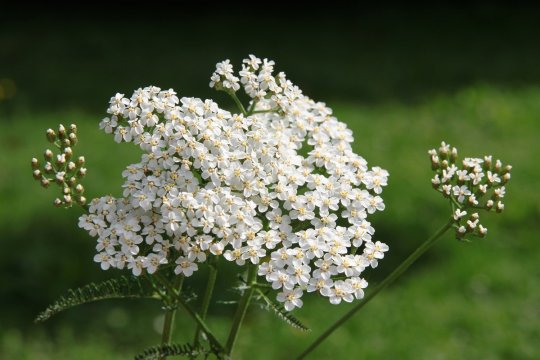
Folk Names: Achillea, Bad Man’s Plaything, Carpenter’s Weed, Death Flower, Devil’s Nettle, Eerie, Field Hops, Gearwe, Hundred Leaved Grass, Knight’s Milfoil, Knyghten, Lady’s Mantle, Milfoil, Militaris, Military Herb, Millefolium, Noble Yarrow, Nosebleed, Old Man’s Mustard, Old Man’s Pepper, Sanguinary, Seven Year’s Love, Snake’s Grass, Soldier’s Woundwort, Yarroway, Yerw
Planet: Venus, Sun
Element: Water, Air
Deities: Cernunnos, Hernes, Pan
Abilities: Courage, Love, Psychic Powers, Exorcism, Clarity, and Healing
Why Poisonous?: Contain thujone (just like Wormwood) Thujone is a chemical compound in yarrow that excites the nervous system. Causes seizures, hallucinations and other adverse reactions.
Characteristics: Has white flowers that bloom atop straight stalks with grayish-green serrated leaves that have a feather like appearance. Is a perennial plant that can grow to 3 feet.
History: Is native to Northern and Western Europe. Is famed as the wonder healer. Was used by Achilles to heal wounds, hence it’s botanical name. It is also known as nosebleed because the leaves were used to staunch blood. It was used in tea by the Native Americans for the treatment of menorrhea, the blood flow of menstruation. In the traditional Yi Jing age, the dried stalks were thrown into water to predict the future.
Growing Yarrow:
Easy to Grow? Yes
Rating: Beginner Friendly
Are the seed accessible? No
How to Grow Yarrow
Video Reference
Where to Buy Seeds
Magical Usage:
Placing the herb on top of graves help the dead peacefully crossover
Weaved into braids creates an energy web that taps into your inner wisdom
Helps develop psychic gifts
A cup of yarrow tea with a cinnamon stick can warm your bones and release hidden truths about oneself
Can be used for divination of the future and relationships
If worn on person, can stop fear and grant courage
Can be hung as a wedding decoration to guarantee seven years of a loveable marriage
Washing hair with water infused with yarrow can prevent baldness
Carrying it around can attract love, friendships, and distant connections
Exorcises evil and negativity from a person, place or thing
Medical Usage:
Clean and heal wounds
Can reduce fever
Stop internal bleeding
Lower blood pressure
Helps with menstrual issues such as: heavy bleeding, period pain, and heavy flow
In tonic form, can help with colds, flu, hay fever, weak digestion, and improve blood circulation
Sources
#witchcraft#witch community#witchblr#green witch#herbalist#medicinal herbs#occulltism#plants and herbs#nature#paganblr#witch garden#gardening#plantblr#yarrow#botany#witchcraft 101#witches#healing#witch tips#witches of tumblr#witchcraft resources#witch blog#beginner witch#herbalism
77 notes
·
View notes
Text
I LOVE learning about the history of Artemisia absinthium (wormwood) and Absinthe in particular, oh my god its absolutely hysterical
The origins of Absinthe are quite unclear. Its medicinal uses can be traced back to ancient Egypt and Greece, then around the 18th century there is a fuzzy first evidence of the actual Absinthe as an alcoholic beverage/ medicinal elixir (I love the word elixir, this is so ridiculously pretentious and uncanny). After the first distilleries appeared in Switzerland and France, the madness increasingly took off. It seems the drink was given to the French troops as a malaria preventive, then they acquired a taste for it (fancy way to say addiction but ok) and couldn't let go of it after coming home. It became super popular in bars, bistros, cafes and cabarets that 5 pm was known as the "l'heure verte" meaning "the green hour". I guess thanks to the iconic green color of the drink. Everyone from the rich bourgeoisie to the poor artists and ordinary working class was drinking it. The french were drinking it over 7 times more than their amount of wine per year at the time (aka 36 billion liters of absinthe/year, this is insane). Then it got exported in the US and other countries.
In the beginning of 1900 the ban came in the US and several other European countries because it was a drink associated with great violence and social disorder. A blame was put on the wormwood compound thujone, saying it was hallucinogenic. Although there are no scientific studies to prove that, and the only study that suggested it was disproven in 1999. Some were fascinated with the notion that getting drunk on absinthe seemed to be manifesting worse than getting drunk on other types of drinks, so they popularized the misinformation (thanks Toulouse-Lautrec, Van Gogh, and Wilde). This explains why the poor article I read mentioned Van Gogh painting with a yellow and green tint out of absinthe-induced hallucinations. Self-induced hallucinations when drunk both on alcohol and on the aesthetic of a drink are powerful I guess, but I also think there must be a seed of truth in their stories. After all, A. absinthium does possess bioactive molecules, so do other ingredients put in the drink and depending on the mix and ratios, the synergistic effect could have different and potent effects on people. So if the isolated molecule from A. absinthium doesn't have hallucinogenic effect, that doesn't mean the mix with other molecules won't have either. Also doses make the poison, and these people were pushing the (unknown then) limits. Not to mention the processing and different recipes, and even the growing conditions of the plants could result in different compositions, and scientific studies weren't done on exactly the same drink. There seem to be biases too.
It seems that a widely accepted theory now is that the hallucination reports rather come from drinking poisonous adulterants of the cheaper versions of absinthe, that put in wormwood oil, impure alcohol and poisonous colorants and such. The truth could be quite a combination of theories, really, 1 doesn't exclude the other.
Anyway, a revival of the drink started in the 90s thanks to the countries that never banned it, and it is more regulated than it was, like in the UE, based on the thujone content (even if its not the culprit molecule, but u know...history). The countries that got a worse history with the drink seem more cautious with it now.
-
sources: 1 , 2 , 3, 4
#I wanna research this plant at some point#make my own analyses#after all....it is medicinal. and thats my job kufufu#this is just the tip of the iceberg I bet#new fav plant#ivy shitposts
4 notes
·
View notes
Text
Can Hamsters Enjoy Sage? A Flavorful and Safe Herb for Your Furry Friend"
Wondering if your hamster can munch on sage? Let's explore the benefits and risks of this aromatic herb.
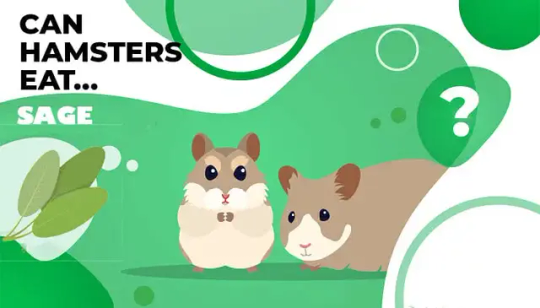
Overview of Sage:
Sage, derived from the Salvia officinalis plant, boasts fragrant grayish-green leaves and offers essential nutrients like vitamin K, A, calcium, iron, and manganese. However, it contains thujone and camphor, potentially toxic in large quantities.
Can Hamsters Eat Sage?
Yes, hamsters can indulge in sage in moderation. Small, occasional servings won't harm them, providing essential nutrients. Yet, excess intake may lead to side effects, so keep it infrequent and in small portions.
Benefits of Sage for Hamsters:
Vitamin K: Supports blood clotting and bone strength.
Manganese: Aids growth and development.
Iron: Boosts immunity and carries oxygen through the blood.
Polyphenols: Antioxidants that may reduce inflammation.
Calcium: Helps build strong teeth and bones.
Risks of Sage Consumption:
Toxic Compounds: Thujone and camphor act as neurotoxins in large amounts.
Digestive Upset: Excessive intake can lead to diarrhea or vomiting.
Aroma Aversion: The strong scent might discourage hamsters from consuming it.
Nutritional Imbalance: Substituting sage for a balanced diet can cause deficiencies over time.
Symptoms of Sage Poisoning:
Lethargy, weakness, and lack of coordination.
Excessive salivation or drooling.
Constricted or dilated pupils.
Rapid breathing and elevated heart rate.
Gastrointestinal issues like diarrhea or vomiting.
Tremors or muscle spasms.
Feeding Guidelines:
Frequency: Limit sage to 1-2 times per week at most.
Quantity: Offer a small leaf or sprig per serving.
Preparation: Chop or mince leaves to reduce choking risk.
Dried Sage: Consider small pinches of dried flakes as an alternative.
Alternatives and Supplements:
Explore other leafy greens and herbs like parsley, dill, basil, clover, dandelion greens, chamomile, and wheatgrass. Quality hamster food brands such as Mazuri, Supreme Petfoods, and Oxbow can serve as dietary staples.
Conclusion:
In conclusion, hamsters can savor the occasional sprinkle of sage, but moderation is key. This herb, when fed carefully, can be a flavorful and healthy addition to your hamster's diet. If uncertain, consult your vet before introducing new treats. Enjoy treating your hamster responsibly!
0 notes
Text
Unlocking the Flavor: Can Your Hamster Delight in Sage? Exploring the Culinary World of Furry Friends
Ever wondered if your hamster could join the herb party? Let's dive into the delightful world of sage and see if it's a savory treat or a potential risk for your furry friend.
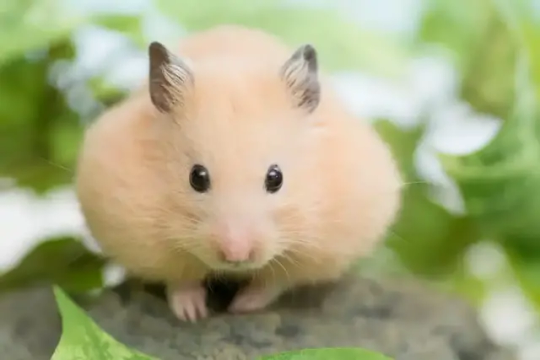
Overview of Sage:
Derived from the Salvia officinalis plant, sage flaunts its fragrant grayish-green leaves, packing a punch of nutrients such as vitamin K, A, calcium, iron, and manganese. However, a word of caution: it also houses thujone and camphor, potential troublemakers in large amounts.
Can Hamsters Eat Sage?
Absolutely! Hamsters can relish the goodness of sage in moderation. Small, occasional servings offer essential nutrients without harm. But beware of overindulgence, as excess intake might lead to unwanted side effects. Keep it casual, keep it small.
Benefits of Sage for Hamsters:
Vitamin K: Supports blood clotting and bone strength.
Manganese: Aids growth and development.
Iron: Boosts immunity and carries oxygen through the blood.
Polyphenols: Antioxidants that may reduce inflammation.
Calcium: A crucial ingredient for strong teeth and bones.
Risks of Sage Consumption:
Toxic Compounds: Thujone and camphor, if overdone, act as neurotoxins.
Digestive Upset: Too much may lead to a tummy revolt – think diarrhea or vomiting.
Aroma Aversion: The strong scent might make your hamster turn up its tiny nose.
Nutritional Imbalance: Substituting sage for a balanced diet could lead to deficiencies over time.
Symptoms of Sage Poisoning:
Lethargy, weakness, and lack of coordination.
Excessive salivation or drooling.
Constricted or dilated pupils.
Rapid breathing and an elevated heart rate.
Gastrointestinal issues like diarrhea or vomiting.
Tremors or muscle spasms.
Feeding Guidelines:
Frequency: Sage should be a VIP guest, not a daily visitor. Aim for 1-2 times per week max.
Quantity: Keep it small – a leaf or sprig per serving is plenty.
Preparation: Chop or mince those leaves to avoid any choking risks.
Dried Sage: If fresh isn’t your hamster's jam, try small pinches of dried flakes.
Alternatives and Supplements:
Sprinkle variety into your hamster's diet with alternatives like parsley, dill, basil, clover, dandelion greens, chamomile, and wheatgrass. Top-quality hamster food brands like Mazuri, Supreme Petfoods, and Oxbow are the reliable anchors for a balanced diet.
Conclusion:
In a nutshell, let your hamster enjoy the occasional sagey delight, but keep it in check. This aromatic herb can be a tasty and nutritious addition to your hamster's menu when handled with care. When in doubt, consult your vet before adding new treats. Happy treating, responsible pet parent!
0 notes
Text

{ ♙ } someone’s cup of tea || Accepting || @deathleads { ♙ }

[ When she sets ornate teacup-and-saucer daintily before the man, the joy in her smile leaves Kain unprepared for the sight below. Red. Redder than red, scarlet, ruby. A rich, cautious hue matched only by her eyes, and just as disarming. He’s never seen a tea like this, before.
Christina mentioned something about a personal blend, no stranger to working with plant matter. She is an alchemist, after all. And after catching him at wit’s end in the library, she’d promised him some kind of tea, something that would “help” him. Help him with what, she’d never specified.
If he’s being honest, the concoction smells rather foul. Or maybe ‘acrid’ would better describe the tart, herbal scent- like a burning rose bush, scorched by an electrical fire. Bringing the teacup close by way of its saucer, Kain does his darndest not to make a face; no doubt something medicinal, in there. But she’d gone through all this trouble, inviting him into her quarters, setting up for afternoon tea... he dared not disrespect her like that.
Thus, raising his cup with a pursed smile, Kain tips back his first sip... and chokes out a cough. It’s sour... ! Bitter, floral, but above all, astringent beyond what he believed an herbal tea could be. Yet, there’s something familiar about it; he tries for another sip. The bitterness is earthy. The florals, a distant tang. If he really concentrates, there’s a flavor in there that reminds him of fruit: cranberry. Something akin to orange, but sharper. And, is he tasting... fig? No, it’s more fragrant than that. Thankfully, one full mouthful later, swallowed hesitantly, brings forth a more recognizable note: vanilla.
Clearing his throat, he cradles cup and saucer in two hands and offers a strained smile; ]
❝ That’s... um, it’s really potent. You made this, yourself? ❞
#deathleads#( v; || the chess board. )#(( welcome to my obscure niche overlapping interests: tea and baneful herbs. let's TALK about chrissy tea ( chrisTEAna if u will )#i made up this blend in my head based on both flavor profiles as well as past teomantic ventures:#the base is an herbal- mugwort tea in fact. extremely bitter on its own-- which is why it is usually masked in blends lol--#mugwort (or any plants of the Artemisia genus) have long been hailed for a plethora of medicinal benefits: energy booster; nerve relaxant;#digestion aid; brain fog/clarity; blood pressure-- all things kain could probably benefit from lol. but mugwort is also a very DIVINE herb*#*that has been used most commonly to promote lucid dreaming (and other means of achieving unattainable knowledge). some cultures*#*use it in common cuisine. others use it /solely/ as an offering to their gods.#-----BUT ''SCIENCE/RELIGION ENTANGLEMENT''-''PLAYING GOD''-ALCHEMY METAPHORS ASIDE-----#hibiscus in tea isn't all that flavorful by itself- albeit very aromatic- BUT hibiscus; cranberry; and BLOOD orange give off a BRILLIANT hue#(hahahahagedditBLOODorange)#notes of vanilla can and will offset the astringency of cranberry and tart-tang of bloragne. definitely mellows the blend.#but that fig-like flavor kain can't identify? that's /Damiana/.#damiana is often used as a stimulant and thusly mood enhancer. it is also famously used as an aphrodisiac. its flavor profile falls*#*somewhere between fig; chamomile; and- breed dependent- licorice.#and to finish this little blend with a few fun facts:#the Artemesia genus is considered entheogenic- comprised of mugworts; wormwood; and sageworts/brushes- it's not only on the psychoactive*#*plant spectrum but certain varieties are considered poisonous due to the presence of thujone in varying plant parts.#damiana is poisonous- lethal even- in high doses and can be microdosed with as a hallucinogenic.#but if certain compounds accumulate in your body you will wind up with ~cyanide poisoning~ !!!!!#.................. oh and before i forget: a drop of cream into this blend would definitely mellow it out. but instead of turning pink*#*like you'd assume- cran/blorange would make it look VISCOUS RED. before probably curdling it#fun visual blood metaphor beyond the color lol.#aaaand that's the tea sis. ))
5 notes
·
View notes
Note
What do you think is Nef's favorite alcoholic drink?
Wine. 100% wine. He drinks that stuff like water, which... wasn't unusual for around the time he was born. After all, Beer and Ale is for the lower classes.
Apart from his casual daily alcoholism I could see him really liking Absinth served with sugar cubes. I mean, that drink just screams Nefarian aesthetic wise.
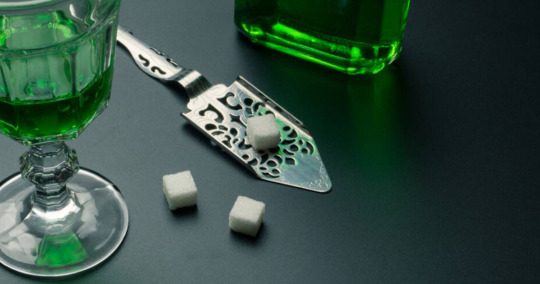
[image source]
It's of an brilliantly poisonous green colour, elegant but with a bad reputation, since it's high alcohol content could lead to some unfortunate results.
In the old days, absinthe was made using thujone, which is believed to cause manic, even delirious behaviour and recent studies show that absinthism was associated with acute auditory and visual hallucinations, epilepsy, brain damage, and increased risk of psychiatric illness and suicide.
And you better believe that Nefarian enjoyed this drink as a special little pleasure especially during the time period it was banned.
Elegant, addictive and lethal if you're not careful, it's also known as known as the 'Artist's Vice' as many brilliant minds such as Oscar Wilde could not resist it's allure.
And just like Nefarian, it's hard to serve it properly~
6 notes
·
View notes
Text
I'm sick of hearing this. No recreation of any authentic absinthe recipe has ever made a single person hallucinate. Yeah, even the "real" stuff from Europe. Yeah, even the "real" stuff from the 19th century. Yeah, even the "real" stuff your totally real friend tried one time and totally hallucinated from. You have the internet at your fingertips almost 24/7, check your fucking facts. This is my soap box and I'm prepared to die on it.
#meow(3).txt#shitpost#okay if you gave yourself alcohol poisoning for a week straight#you might accumulate enough thujone to hallucinate
1 note
·
View note
Text
HERBAL DEEP DIVE: MUGWORT
Artemisia vulgaris
Folk Names: Artemis Herb, Artemisia, Felon Herb, Muggons, Naughty Man, Old Man, Old Uncle Henry, Sailor's Tobacco, St. John's Plant
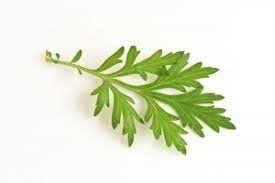
Gender: Feminine
Planet: Venus
Element: Earth
Deities: Artemis, Diana
Powers: Strength, Psychic Powers, Protection, Prophetic Dreams, Healing, Astral Projection
Mugwort is a common name for several species of aromatic plants in the genus Artemisia. In Europe, mugwort most often refers to the species Artemisia vulgaris, or common mugwort.
Lets begin with the first part of travel for this monstrously magical plant.
Roman Soldiers would put Mugwort in their sandals to protect their feet against fatigue as well as protection against poison, wild beasts, or sunstroke, according to ancient tradition.
To replicate this, Place mugwort in the shoes to gain strength during long walks or runs. For this purpose pick mugwort before sun-rise, saying:
"Tollam te artemesia, ne lasso sim invia."
“I walk with thee Artemesia, Lest not I tire on the road”
In addition to this, Mugwort is one of the first ingredients in Woden’s (Odin for the New English speakers) Nine Herbs Charm, a treatment intended for poisoning and infection. (A post on this is to come.)

Now, lets get to the other forms of travel that Mugwort can assist with.
As you may have seen, mugwort has the power of Astral Projection & Prophetic Dreams. These effects can be achieved through Tea, Smoke, or Incense.
Mugwort oil contains a chemical compound known as Thujone (A hallucinogenic) which on its own is a considered to be a convulsant; however when GABA is present (such in the case of Mugwort) it will convey stimulating, mood elevating effects in low doses. Well, what does this mean?
It means that with the combination of chemicals found in this mystical plant, it can either act as a stimulant, OR it can reduce anxiety, improve REM cycle, and give the user a chance to lucid dream or astral project.
A combination of Sandalwood and Mugwort is common to burn before scrying rituals. The infusion is also used to wash crystal balls and magic mirrors, and mugwort leaves are placed around the base of the ball (or beneath it) to aid in psychic workings.
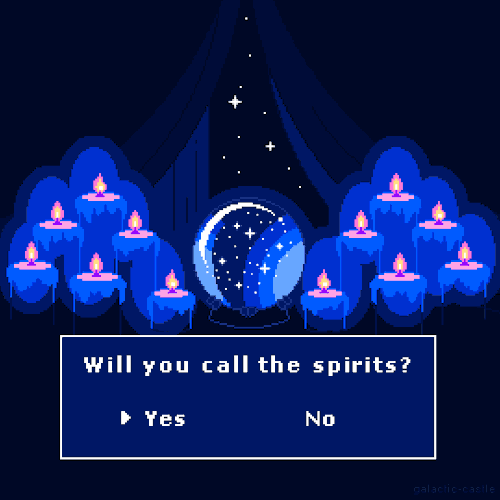
Mugwort tea was usually drunk before divination rituals and also burnt as a ‘transporting’ incense. Also known as the visionary herb, Mugwort is still used today for increasing psychic powers. Native Americans also burned Mugwort as a ‘smudge’ to purify the spiritual and physical environment. The herbal tea was, and is still used by women for late periods (it relaxes the uterus).
THEREFORE PREGNANT WOMEN MUST NEVER USE MUGWORT OR BE IN ANY CONTACT WITH IT!
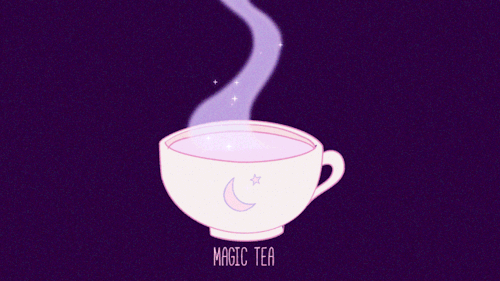
How to make mugwort tea
Heat water to a boil.
Use 1 or 1.5 heaped teaspoons of mugwort for each cup of water.
In a teapot or french press, pour the water over the tea.
Cover and leave to infuse for 8-10 minutes.
Strain and enjoy!
The tea is a deep brown or amber with lots of fine sediment suspended in it. The tiny particles hang almost motionless in the tea as I swirl it around my glass. They make the tea look thick and rich. The taste may be bitter to some, if it's too much to handle, add a bit of honey to sweeten it up.
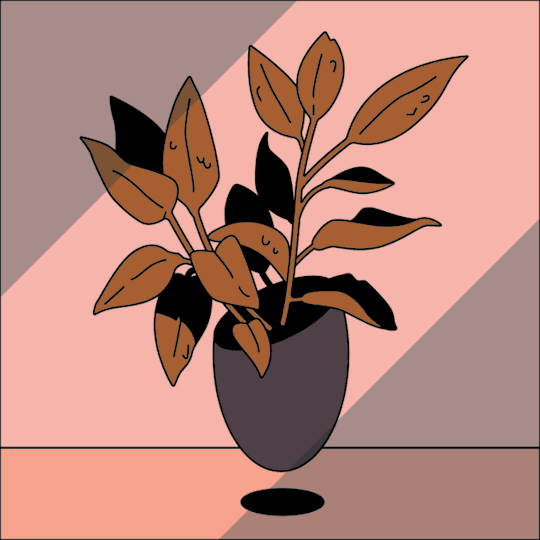
Keep in mind that I do not know you're personal medical history, nor do I know how you will react to certain medications.
This is simply for educational and informational purposes.
#Magic#magical#herbs#green witch#kitchen witch#witchcraft#witchblr#book of shadows#grimoire#witch#witches#wicca#wiccan#pagan#nature witch#witchy#just witchy things#herbalism#tea#green witchcraft#kitchen witchcraft#spell#herb magic#spirituality
129 notes
·
View notes
Text
Dream-Weaving Part Eight: Herbal Allies for Dreaming
There are some herbs that can help you sleep, help you dream, and even help you avoid nightmares. I’ve written up a short list of my favorites here.
Please apply caution whenever you start to make friends with herbs! Start small, ascertain the recommended dosage for your age and weight, and make certain that whatever you take does not conflict with other medications or supplements that you may be taking. Remember that every medicine is poison at the right dosage — and vice versa. If you’re unsure, check with your doctor. Several of these herbs are counter-indicated for pregnancy as well, so please do your research, as I do not give a complete profile of each herb on this list.
In addition, check up on local ordinances regarding the legality of purchasing or using these herbs, as some of them are illegal in some places. As a note of warning, please be aware that if you suffer from PTSD, depression, or anxiety-linked nightmares, you may find that these will come back to you in ways that may be upsetting and challenging when you begin a dreaming practice and use herbal allies. While I have used some of these methods to help me combat PTSD and anxiety, you may find that they aren’t useful for your situation. We’re all different, so I offer many options on this list because what works for another may not work for you.
Those That Bring Sleep
Valerian [Valeriana Officinalis] — Valerian is a well-known sleep aid; you can buy it in pill or tea form. It pretty much only does this one thing, but it's good at it.
Catnip [Nepeta Cataria] — Catnip is often sold as a "legal high" for its bronchial and sedative properties; smoking catnip actually relaxes and opens the lungs. It's not sleep-producing per se, but it is relaxing and sedative enough that it can help in a mild way that won't make it hard for you to wake back up.
Melatonin — Melatonin isn't an herb, but I wanted to list it here anyway; if your endocrine system is out of wack due to stress or anxiety, then melatonin may be your best friend, as it effectively balances out high cortisol levels to help you sleep. This is what your body naturally produces to make it sleep, so it's very safe, as sleep aids go. It's good to take it easy and start slow with it, though — it can be very effective at countering cortisol, so don't take it if you have something to do between the time you take it and the time you go to bed. You may even feel a bit slow in the morning after using it, so adjust your dosage accordingly.
Those That Induce Dreaming
Mugwort [Artemisia Vulgaris] — Mugwort makes dreams more vivid, easing both lucid dreaming and dream recall. It can be made into a tea, or sewn into a sachet that can be placed inside the pillow. Even smelling mugwort will produce some effect, but the tea produces the strongest effect. That being said, it's very, very bitter. You should also be careful to use this only on occasion and in moderation, as chronic use of mugwort at high doses can cause thujone to build up in your system. This is not a problem for someone who only drinks a little mugwort now and then, but it's something to be aware of.
Dream herb [Calea Ternifolia or Calea Zacatechichi] — I haven't actually been able to find a source that I trust for this herb, so I haven't tried it myself (as I have done with everything else on this list), but I would be remiss if I didn't mention it, as it is supposed to be one of the MOST effective dream-inducing herbs out there, and especially good for astral travel.
African dream herb [Entada Rheedii] — Can be smoked, or taken in tea or pill form. Induces vivid dreams and is thought to aid astral travel and spirit communications.
Blue Lotus [Nymphaea Caerulea] — Increases the appearance of auras and brightens lights in general, may induce close-eyed visions at high doses; makes dreams more vivid and sensorily engaging. Also an aphrodisiac, on the same basis of engaging your senses more immediately.
Those That Ease Anxiety and Guard Against Nightmares
Chamomile [Chamaemelum Nobile or Matricaria Chamomilla] — Chamomile is an effective nervine, meaning that it calms the nervous system and eases anxiety. It relaxes muscles, and soothes the stomach, which helps to drive away nightmares and sweeten dreams.
Lavender [Lavandula Angustifolia is most common, although any lavender would do] — Lavender is another nervine which eases anxiety and promotes mental relaxation.
Sage [Salvia Officinalis] — Your mileage may vary on this, but sage is used for basically everything by herbalists, but especially as incense. I have burned sage enough times for meditation, trance, and energetic cleansing, that whether by its own natural properties or its association in my mind with mystical things, it puts me into a state of mind where I am more quiet, focused, and receptive.
The Wild Card
Cannabis [Cannabis Indica or Cannabis Sativa] — Cannabis is well-known for its soporific effects, but its effects on dreams are mixed. Some people claim it helps them dream, but others have exactly the opposite experience. In my experience, very low doses don’t affect my dreams, but at medium and high doses, I won’t dream at all, and I certainly won’t remember it. Some research indicates that it may actually inhibit REM sleep entirely. If you are a daily toker trying to dream more and do dream work, I would suggest taking a break from cannabis so that you can engage to the fullest with your dream world.
This post concludes my eight-part series on dream-weaving. Thank you for reading and sharing! Please feel free to contact me with any questions, and I’d especially love to hear which of these (or other) methods have worked for you!
#dreams#dreaming#dreamweaving#dream herbs#valerian#catnip#melatonin#mugwort#calea zacatechichi#entada rheedii#blue lotus#chamomile#lavender#sage#cannabis
15 notes
·
View notes
Text
Get to Know the Benefits of The Wormwood Plant

Wormwood plant has been grown in various parts of the world because of its numerous benefits. It’s a plant that has been known to have many contraries due to toxic component thujone, but it is considered to be a plant that has a lot of medicinal values. Wormwood was utilized as a cure to numerous sicknesses, for example, malaria and others back in the past times. Since it is biological friendly, specialists have concocted strategies in which the plant can be utilized in an assortment of ways. This review will highlight a couple of the benefits of wormwood. The wormwood component known as thujone is known to be lethal. In spite of that fact, this much thujone makes the wormwood a perfect antiperspirant on account of its particular aroma and properties of expelling microbes that cause body stench. Its smell is so strong to the point that it could be used as a bug spray and pesticides since it is poisonous to such creatures. Typically, one must be watchful when using it. It is usually diluted so as to avoid any inhalation which can end up being toxic.
Additionally, it is an outstanding and compelling cholagogue. Wormwood is used to help proper digestion of food by aiding in the emission of the bile which thusly is in charge of the decomposition of food. Then again, it is supposed to be used in fewer doses when used as the aid for the emission and stimulation of bile. African worm wood oil is used to help maintain the balance of base and acid in the belly by neutralizing the excess production of acid, a phenomenon which could bring ulcers and other stomach acidity complications.
From the good old days, wormwood essential oil was utilized as an approach to expel worms from the body henceforth the name wormwood. Tapeworms, hookworm and such are said to repel wormwood. This could be perfect for kids as they can use the oil in order to have appropriate digestion of nutrients in their food as opposed from having parasitic worms eating much of the nutrients instead. Also, rosehip oil is used to treat numerous body conditions such as anemia, anorexia, insomnia and so on.
From the countless benefits that one could get from the plant, this is why some organizations have emerged as producers or suppliers of the plant and its other products. If you wish to discover the ideal wormwood plants or its products, do your research. The web is a good source of information, or you can also attend agricultural or conservation forums where you will get to learn more about the plant. Learn more about health at https://en.wikipedia.org/wiki/Health.
1 note
·
View note
Text
In the United States, the addition of pure thujone to foods is not permitted.[31] Foods or beverages that contain Artemisia species, white cedar, oak moss, tansy, or yarrow, must be thujone-free,[32] which in practice means that they contain less than 10 mg/l thujone.[33] Other herbs that contain thujone have no restrictions. For example, sage and sage oil (which can be up to 50% thujone) are on the Food and Drug Administration's list of generally recognized as safe (GRAS) substances.[34]
Absinthe offered for sale in the United States must be thujone-free by the same standard that applies to other beverages containing Artemisia,[33] so absinthe with small amounts of thujone may be legally imported.
and tried to poison us with this tons of times and yes bja the most. and he is on it and is high as a kite and vitamin k for his crimes. tons of it. and yes is a consumate Absinthe drinker
Thor Freya
0 notes
Text
Everything You Need to Know About Herbs : Wormwood
Wormwood (Artemisia absinthium)
*Poisonous *Medical Herb *Masculine
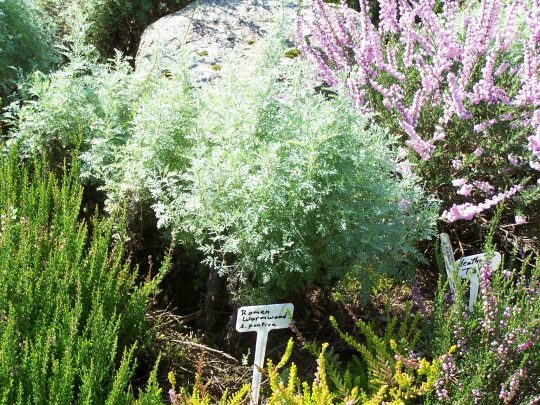
Folk Names: Absinthe, Old Woman, Crown For The King, Madderwort, Wormot
Planet: Mars
Element: Fire
Deities: Iris, Diana, Artemis
Abilities: Amplification of Psychic Powers, Protection, Banishment, Love, and Calling Spirits
Why Poisonous?: Thujone - A chemical compound in wormwood that excites the nervous system. Causes seizures, hallucinations and other adverse reactions.
*Do not exceed 1/2 grams of the dried herb in a tea two to three times a day.
Characteristics: Pleasant yet musty aroma with a bitter taste. Has deep roots, silver hairy leaves and yellow flowers when it blows. Can grow up to 18 inches.
History: The earliest reference to wormwood was as far as 2800 B.C. by the legendary Chinese emperor, Shen-Nung. Medicinal usage of this plant could date back to the 1840s where French Foreign Legion troops were given absinthe to prevent fever. Was also referenced by Dr. George Ebers in 1873. Is Native to Europe and is also seen in North America. There is even reference to wormwood in the Holy Bible and Egyptian papyri as it was used to repel certain insects and animals from specific areas. Its botanical name absinthium comes from the Roman word absinthial which means bitter.
Growing Wormwood:
Easy to Grow? Yes
Rating: Beginner Friendly
Are the seeds accessible? No
How to Plant Wormwood.
Video Reference
Where to Buy Seeds
Magical Usage:
Can be burned to develop or amplify psychic powers
If burned with sandalwood can summon spirits of the undead, especially if burned in a graveyard
Can be carried on one's person to protect from bewitchment and sea serpents
Can be planted as a boundary ward against evil, snakes and pests
Was used to counteract the effects of hemlock and toadstools (I wouldn't recommend it)
Can be hung in a rear view mirror to protect vehicles from accidents in bad roadways
Can be used in love potions with absinthe
If immersed in olive, grapeseed and avocado oil for three full moons (3 months) can be a powerful anointing oil
Medical Usage:
Fever
Digestion Problems
Liver Disease
Depression
Loss of Appetite
Muscle Pains
Memory Loss
Crohn's Disease
Insect Bites (While In Salve Form)
Sources
#witchcraft#herbs#plants and herbs#green witch#witchblr#herbalist#witch community#alchemy#occulltism#medicinal herbs#witches#paganblr#paganism#witchcraft 101#seeds#gardening#witch garden#plantblr#plants#botany#witch tips#witches of tumblr#witchcraft resources#witch blog#beginner witch
52 notes
·
View notes
Text
Everything you need to know about: absinthe
If you are not a 19th century poet struggling with your own supernatural intelligence, you should not have much experience with Ebinth. Absinthe is flavored distilled liquor, yellowish green in colour. When we mixed with water then it’s turning into white opalescent. Absinthe is made from spirits high in alcohol like a brandy. Typically is marketed with alcoholic content 68 percent by volume. Really, you could not get your hands on the "green fairy" unless you were brought back from the US. Not good it’s time to dust off your "La Vine Rose" playlist, brush up on your Hemingway, and assimilate the mythical feelings that lie. The herbs turn pale green, which makes you wonder, "What do I get into myself?"
History of Absinthe
Absinthe is powerfully strong spirits with hunting green colour. Like gin, absinth is infused with botanical, but instead of gin’s base, absinthe blends wormwood, anise and spicy fennel with other mysterious herbs like hyssop. We suspect that absinthe has made her debut in Switzerland - a grand offering from a neutral country. This popularity grew among the Bohemians in 19th century Europe - you know, the next great thing is a free-spirited gang that always knows what it is. Hey, they were right about jeans and shorts.
Why Absinthe was banned
Why was it banned in most banned in most European countries and the U.S. in the early 20th century? “Absinthe fell victim to his own popularity when the French wine industry and the restraint movement targeted the common scapegoat to promote their own agenda,” says Breaux. U.S. law enforcement in 1912 was also interested, but not as an alcoholic. They banned it 6 years before the ban that year, so Absinthe had clearly fluttered some of its wings. Why all the fuss? Well, nasty rumors had begun to spread about absinthe: that the wormwood caused hallucinations turned you into a “crazy criminal” and promoted tuberculosis. Wormwood, thujone and bears, oh my. But there is zero evidence of that. Wormwood contains a chemical component called thujone that can cause muscle discomfort at high concentrations, but does not cause dementia, "madness" or, frankly, tripping.
Can Absinthe Kill You
Absinthe is a natural botanical spirit, so there is no “poison” hidden that will kill you. However, it has a high alcohol content which is not really good for you if you do too much. Get your Absinthe into moderation and you will have a beautiful time with the Green Fairy.
How to Drink Absinthe
Absinthe brings intrigue to the swankiest parties and injects classics into classic movie nights. You want to use it for a while, so here are some ways to get the most out of it. Absinthe doesn't make a great straight sip because it's too strong and bitter, but try straight so you can break down its basic flavor. It's right here. A spirit with such a botanical character and strength has many applications in your home bar.
Is Absinthe is legal now
Yup, eventually the quiet head prevailed in the US and in 2007 the absinthe was re-legalized in the US. The U.S. Bureau of Alcohol, Tobacco Tax and Trade (TTB) only requires wormwood levels below 10 degrees per million. Remember the government isn’t trying to stop you from tripping; to do this you need a toxic toxin (don't do that). We mean they don’t want any potentially harmful chemicals in their burden. Tough but fair. So, what you think Absinthe causes Hallucination? And the answer is NO. If you’re trying to be misleading, you’re not going to do it vaguely. However, if you're having a banquet-themed party or some sort of old-fashioned European ken- and tophat night out, you'd love a green fairy. Everyone has an opinion about this when you blow up Absinthe at your cocktail party.
What is good in Absinthe
Good Ebinth displays excellent herbal properties. It shouldn’t be all sorts of flavors and alcoholics. We like Grand Absenthe Absinthe because it balances well between herbal wormwood. There is two are a little pricier, but we aren’t dealing with an ordinary spirit here. Could a giant bottle of Absinthe backlit with a green-light heavy-duty flashlight flashing across the harbor from Gatsby's dock in Great Gatsby? We are not sure. Fortunately for us, Absinthe is a dream of the past that is well within our reach. Order with Drinkerrs tonight and the green fairies will soon be knocking on your door. Remember, you have invited green fairies. You just order your green fairies and wait for a 30 to 60 min and open your door for welcome your green fairies and enjoy.
0 notes
Text
5 of the Biggest Absinthe Myths Debunked
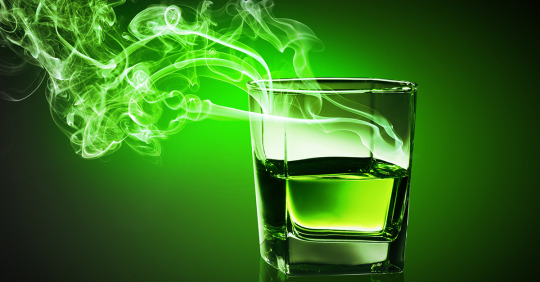
Absinthe’s purported power to conjure fairies and send drinkers insane endures thanks to misrepresentations in art, literature, music, and movies — and loaded, pseudo-scientific experiments. In reality, painting the so-called “Green Fairy” as some kind of conscious-expanding elixir is the work of pure fiction, the effects of which have rippled for more than 100 years.
The truths can sometimes feel as cloudy as the liquor itself (when prepared properly), but there’s little need to worry about absinthe. To set the record straight, here are five of the biggest myths surrounding absinthe, busted.
Absinthe Makes You Hallucinate
Absinthe is a botanical distillate that contains, among other ingredients, a mixture of anise, fennel, and a type of wormwood called Artemisia absinthium. This wormwood imparts the psychoactive chemical thujone into the spirit. But the quantity of thujone present in modern absinthe is so little (a maximum of 10 parts per million in the U.S.), you’d sooner die of alcohol poisoning than be able to drink enough to start hallucinating.
But what about the past? Isn’t it possible that the absinthes being drunk during the Belle Epoque era had higher thujone levels? Scientists say no.
In 2008, international researchers from Germany, England, and the U.S. published a study comparing thujone levels from pre1915 absinthe with 20th-century and modern-day examples. The authors of the study note that the “thujone ranges of all absinthes are quite similar,” thus disproving any idea that absinthe historically contained higher levels of psychoactive chemicals and was therefore hallucinogenic.
Absinthe Turns People Crazy
Other than the myth that it makes drinkers see things, absinthe has gained notoriety for its supposed ability to drive people crazy. Once again, the science used to explain this phenomenon, called “absinthism,” is shaky at best and doesn’t hold up to modern scrutiny.
The links between absinthe and mental health issues are based on the experiments of Dr. Valentin Magnan, a French psychiatrist who strongly opposed absinthe and what he believed to be its ill effects on society.
During the late 19th century, Magnan carried out tests on animals using thujone and wormwood oil. He noted that when mice consumed high concentrations of thujone, they had convulsions and died. When Magnan gave a dog a vial of wormwood oil, he watched it bark at a brick wall for half an hour.
For years, Magnan’s findings went mostly unchallenged. Then in 2006, authors of the medical paper “Absinthism: a fictitious 19th century syndrome with present impact,” noted that “[t]he only consistent conclusion that can be drawn from those 19th century studies about absinthism is that wormwood oil but not absinthe is a potent agent to cause seizures.”
What’s more, the paper points out that there is no evidence absinthe is epileptogenic, nor that absinthism can be distinguished as a distinct syndrome from alcoholism. In other words, absinthe’s most harmful characteristic has always been its alcohol content, which typically ranges from 45 to 70 percent ABV.
Absinthe Is Illegal
This misconception is the only one tied to facts, as absinthe was illegal in many countries for most of the 20th century.
Numerous factors likely contributed to the Green Fairy’s banning across large parts of Europe and the U.S., including Magnan’s experiments. Then came the case of the Lanfray murders in Switzerland in 1905.
After spending a good portion of his day drinking, Swiss vineyard worker Jean Lanfray murdered his wife and two daughters in a drunken rage one night. Though Lanfray also drank Cognac, brandy, crème de menthe, wine, and beer that day, it was the two glasses of absinthe he drank that stirred more interest from the prosecutor and media.
Absinthe was quickly banned in Switzerland. And with the exception of England and Spain, absinthe was outlawed by most European countries and the U.S. by 1915. Stateside, it would remain illegal until 2007, by which point scientists had dispelled fears over the dangers of thujone.
Absinthe Requires a Flaming Sugar Cube
It’s easy to see why some confusion arises over how to drink absinthe, especially with ornate water fountains and silver spoons both common, useful accessories. Given the spirit’s potent strength, and just like other anise-flavored alcohols, absinthe is best enjoyed diluted with water. The perfect dilution ranges from brand to brand, but enough ice-cold water should be added to spark the “louche” effect, turning the spirit cloudy or milky, thanks to the emulsification of essential oils and water. (Three parts water to one part absinthe is a loose guideline.)
Historically, this water has been added drip-by-drip over a slotted spoon and single sugar cube — the sweetness helping to counteract the natural bitterness of wormwood. Where and how flames first figured into the equation is just as unclear as properly diluted absinthe. Needless to say, the practice persists purely for visual impact and perhaps only takes away from the experience.
Absinthe Can Only Be Made in Europe
Despite deep rooted ties to France and Switzerland, absinthe in general is not a geographically protected product. This means distillers in America are just as welcome to conjure the Green Fairy as those from mainland Europe — and more than a handful are.
In 2019, however, following 15 years of negotiations, the EU granted Protected Geographical Indication (PGI) status to Absinthe de Pontarlier. Just as only sparkling wine made in Champagne can bear the historic region’s name, the new labeling applies only to producers in the Swiss border region of eastern France.
The EU regulations also dictate all the major aspects of Absinthe de Pontarlier production, including ingredients and their provenance, alcohol content, and — of course — the quantity of thujone allowed in the spirit.
The article 5 of the Biggest Absinthe Myths, Debunked appeared first on VinePair.
Via https://vinepair.com/articles/5-biggest-absinthe-myths/
source https://vinology1.weebly.com/blog/5-of-the-biggest-absinthe-myths-debunked
0 notes